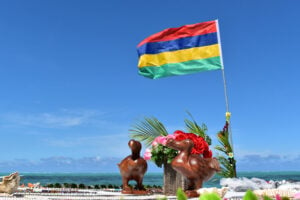Mauritius boasts a well-developed transport infrastructure, particularly in its western region, enhancing connectivity and accessibility for residents, expatriates, and tourists alike. Key developments include the Metro Express light rail system, a 26-kilometer transit corridor connecting Curepipe and Port Louis, aimed at reducing traffic congestion and providing faster, more sustainable commutes. Complemented by well-structured road networks and innovations like digital ticketing, these projects represent a significant government commitment to improving accessibility and promoting economic growth in the region.This robust network includes comprehensive road systems, public transportation options, and ongoing transport infrastructure in the West of Mauritius aimed at further improving mobility across the island for both locals and expatriates.
Transport Infrastructure in the West of Mauritius
The west coast of Mauritius features an extensive road network that facilitates seamless travel between key areas. The primary arteries, such as the A3 and B27 roads, connect coastal towns like Flic en Flac, Tamarin, and Black River to the capital city, Port Louis, and other central regions. These well-maintained roads are crucial in reducing traffic congestion and promoting efficient transportation.There has been a lot of development in the transport infrastructure in the west of Mauritius. A significant development in this region is the Flic en Flac Bypass. This project, undertaken by the Medine Group in partnership with the Road Development Authority (RDA), aims to alleviate traffic congestion in the coastal village of Flic en Flac. The bypass will provide a good road infrastructure and an alternative route, enhancing accessibility and reducing travel time for commuters and tourists.
Smart City Initiatives and Infrastructural Enhancements
The western region is also witnessing the rise of smart city projects, such as the Medine Smart City. These initiatives integrate residential, commercial, and recreational facilities with sustainable transport solutions, including dedicated cycling lanes and pedestrian pathways. Such developments not only enhance the quality of life for residents but also attract investors and expatriates seeking modern living environments with efficient transport connectivity. Bijou Résidence just celebrated its groundbreaking ceremony to launch its sustainable property development project under the Medine Smart City.
There have also been various public transportation enhancements, where the west of Mauritius has seen notable improvements, particularly with the extension of the Metro Express light rail system. The Metro Express now connects the capital, Port Louis, to the western suburb of Quatre Bornes, with plans for further expansion to areas like Flic en Flac. This development offers a reliable and efficient alternative to road travel, reducing reliance on private vehicles and contributing to decreased traffic congestion.
Benefits for Expatriates and Families
IFor expatriate families in Mauritius, easy access to quality education is a top priority, and the transport infrastructure in the west of Mauritius provides convenient connectivity to some of the island’s top universities and schools. The improved road networks and the expanding Metro Express system make it simple for students to commute from the west to key educational institutions across the island. For instance, the University of Mauritius, located in Réduit, is accessible via well-connected routes, with a commute time of around 30–40 minutes from popular west coast towns like Flic en Flac and Tamarin. Other international schools like Middlesex University and West Coast International Secondary School are both located in Flic en Flac, easing transport issues.
Additionally, upcoming extensions of the Metro Express will further streamline access to educational hubs, enabling students to travel more sustainably and efficiently across the island. With infrastructural accessibility to Educational Institutions, reputable schools and universities are easily reachable via the improved road networks and public transport systems.
Not only that, proximity to modern hospitals and clinics such as Medine Private Hospital ensures that healthcare needs are met quickly and conveniently through the efficient transport infrastructure in the west of Mauritius. Additionally, the streamlined transport options allow residents to fully experience the West Coast’s vibrant offerings—from pristine beaches to bustling markets and cultural sites—making the area not only well-connected but also highly liveable for locals and expatriates alike.
As a conclusive note, the transport infrastructure in the west of Mauritius plays a pivotal role in facilitating connectivity across the island. Ongoing developments, such as the Flic en Flac Bypass and the expansion of the Metro Express, underscore the commitment to enhancing mobility for all. These advancements not only benefit current residents but also make the region an attractive destination for expatriates, investors, and tourists seeking a well-connected and dynamic environment.
Invest with Bijou Résidence and expatriate to the west of Mauritius to benefit from well-connected transport infrastructure across the island!


